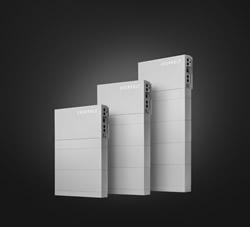Why PV balance of systems is important in 2011
In a recent report ‘uncertainty in long-term photovoltaic yield prediction' by CanmetENERGY it demonstrated why it is vital to prioritise optimisation of PV balance of systems in order to achieve maximum plant efficiency & improved profit margins for plant owners.
With Europe's PV market in flux, and competition getting tougher it has become important now more than ever before to develop an effective BoS strategy. If not solar companies will not survive the market shake up & we have already seen solar giants such as First Solar and Phoenix experiencing a downturn in their Q1 financial evaluation.
It is fair to say that the PV Balance of Systems Conference taking place 28-29 June in Berlin could not have come at a better time. Especially as this forum has been organised to discuss and share the experiences of Europe's leading EPCs and installers on how to optimise PV balance of systems and plant output.
Staggering facts on PV plant performance
In the CanmetENERGY energy report there was a study of 21 systems during 10 years of operation which revealed that inverters contributed 63% of failures, modules 15% and other components 23%, with a failure occurring on average every 4.5 years (Jahn and Nasse, 2004).
For a 3.51 MWp plant comprising 26 individual systems, Moore and Post (2008) report over 150 unscheduled maintenance events over a 5 year period. This corresponds to a mean time between unscheduled services per system of 7.7 months of operation.
Failures include problems with the data acquisition system, inverter, junction boxes, PV array, and AC disconnect. Causes varied but included a severe lightning storm strike, high-contact resistance in the AC disconnects, lack of auto reset capability of the inverter, failure of blocking diodes, problems with nesting rodents.
The majority of repair costs were associated with the inverters. The authors also mention problems with the utility-side capacity, the response of the PV system to cloud passages creating instabilities in the control system of the nearby coal power plant.
Another study of Japanese systems (Sugiura et al., 2003) reveals that inverters failed in 6% of systems and modules in 1% of systems. 45% of the systems experienced some occurrence of inverter problems (instability, power failure, or shift to power-limit mode). For these systems, the mean time between either problem or outright failure was estimated at 3.55 years, the mean time to repair (MTTR) was estimated at 24.6 days and overall system availability was 99.74%.
With these staggering statistics, the experts such as Mariano Berges, Chief Technical Officer at Fotowatio Renewable Ventures & Juan M. Fernández AM PV Plant Performance, at BP Solar will be discussing how to minimise these effiencey losse with more than 30 of leading solar experts at the PV Balance of Systems Conference.
For more information on the event please contact:
Heidi Hafes
Research & Events Director
PV Insider
+ 44 207 375 7206
heidi@pv-insider.com
http://www.pv-insider.com/balanceofsystems
Featured Product

